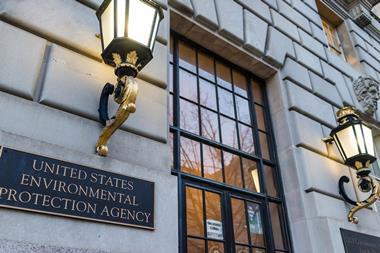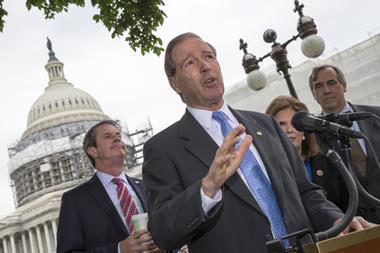One year after Obama enacted law to modernise chemical regulation the EPA has met its deadlines and issued the required rules
The US Environmental Protection Agency (EPA) has issued final rules for the updated Toxic Substances Control Act (TSCA) that regulates new and existing chemicals in the US. Released on 22 June, the rules establish a process for the agency to conduct risk evaluations to determine whether a chemical presents an unreasonable risk of injury to human health or the environment, without consideration of costs.
The EPA also released a guidance document to help companies, trade associations and others to develop and submit draft chemical risk evaluations for the agency’s consideration. It details the science standards, data quality considerations and the risk evaluation steps that must be followed. In addition, the EPA issued ‘scoping documents’ for the initial 10 risk evaluations of chemicals that will be conducted.
TSCA was more than 40 years old when former President Obama signed into law long-awaited legislation to overhaul the programme in June 2016. There was significant concern, in Congress and elsewhere, about whether the EPA would be able to meet this deadline, yet the agency prevailed and delivered the required rules by the one-year mark. ‘This is incredibly significant – a lot of kudos to the EPA for making sure that when their feet were held to the fire, they were able to produce and get done what they needed to to make the programme work,’ says Judah Prero, former assistant general counsel to the American Chemistry Council, who is now counsel at the corporate law firm Sidley Austin in Washington DC. ‘It appears that the EPA did look at the comments that were made on the issue, and they tried to produce a final rule that was responsive.’
Prero says EPA administrator Scott Pruitt has voiced support for the revamped TSCA law. ‘The EPA will need every cent that they can get, and even to date they have been shifting resources around looking to really beef up staff in order to keep the pace as steady and consistent as required,’ he tells Chemistry World. Even though there might be significant cuts in other parts of the EPA’s budget, Prero predicts that the agency’s funding and staff in this area of chemical reviews will be increased significantly.
The American Chemistry Council expressed support for the EPA’s new rules to implement a modernised TSCA, emphasising that it is ‘imperative that the risk evaluations for these first 10 chemicals, and all future risk evaluations, are grounded on the best available science and the weight of the scientific evidence.’ However, environmental groups did warn that these final rules introduce loopholes that could allow the EPA to ignore important exposure routes and chemical product uses. For example, the Natural Resources Defense Council said the new rules on chemical prioritisation and risk evaluation had been weakened and are now much more favourable to the chemical industry than the versions agreed upon through the public consultation process.

















No comments yet